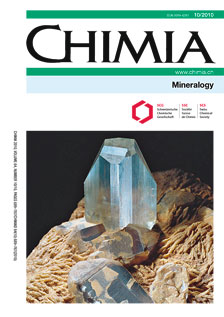Synthetic Calcium Phosphate Ceramics for Treatment of Bone Fractures
DOI:
https://doi.org/10.2533/chimia.2010.723Keywords:
Biomaterial, Bone substitute, Calcium phosphate, Medical deviceAbstract
Bone is a complex natural material with outstanding mechanical properties and remarkable self-healing capabilities. The mechanical strength is achieved by a complex structure of a mineral part comprising apatitic calcium phosphate crystals embedded in an organic matrix. Bone also contains several types of cells constantly replacing mature bone with new bone. These cells are able to seal fractures and fill gaps with new bone in case of structural damage. However, if a defect exceeds a critical size, surgery is necessary to fill the void with a spacer in order to prevent soft tissue from growing into the defect and delaying the healing process. The spacers, also known as bone grafts, can either be made of fresh bone from the patient, of processed bone from donor organisms, or of synthetic materials chemically similar to the mineral part of bone. Synthetic bone void fillers are also known as bone graft substitutes. This review aims at explaining the biological and chemical background that lead to the development of synthetic bone graft substitutes and gives an overview of the current state of development. It also highlights the multidisciplinary nature of biomaterials research, which combines cell biology and medicine with chemistry, mineralogy, crystallography, and mechanical engineering.Downloads
Published
2010-10-29
Issue
Section
Scientific Articles
License
Copyright (c) 2010 Swiss Chemical Society

This work is licensed under a Creative Commons Attribution-NonCommercial 4.0 International License.
How to Cite
[1]
Chimia 2010, 64, 723, DOI: 10.2533/chimia.2010.723.







